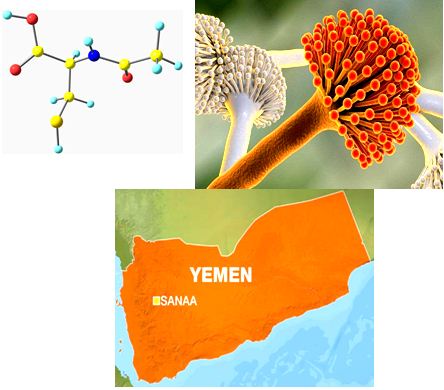BIODEGRADATION OF PARACETAMOL BY NATIVE FUNGAL SPECIES INHABITING WASTEWATER OF A PHARMACEUTICAL FACTORY IN SANA’A, YEMEN
Keywords:
Lozenges, HPMC K4M, Carbamazepine (CBZ), swallowing, in vitro dissolution, stability studiesAbstract
Objectives: Paracetamol has emerged as an important environmental contaminant due to its extensive use. The purpose of this work was toisolate, identify, and characterize fungal species able to degrade paracetamol from pharmaceutical wastewater effluent at Sana'a City, Yemen.
Methods: The fungi were isolated and purified from wastewater samples using enrichment and selective media. The isolated fungi were identified according to phenotypic characterization. Two species of isolated fungi were able to utilize the paracetamol as the sole of carbon and energy sources. These fungi were designated as F1 and F2 and identified as Aspergillus niger and Fusarium oxysporium, respectively. Optimum temperature and pH for growth of both species were 25˚C and 6.0, respectively. Also, the biodegradation of paracetamol was influenced by glucose concentration.
Results: F1 and F2 were able to degrade 35.7% and 26.1% of 1000 and 2000 mg/l, respectively, paracetamol in 60 days. This is the first report on the ability of Aspergillus niger and Fusarium oxysporium to degrade paracetamol.
Conclusion: The reported findings highlight the potential use of the isolated microorganisms for treatment of paracetamol-contaminated wastewater.
Peer Review History:
Received 5 October 2017; Revised 10 November; Accepted 22 December, Available online 15 January 2018
Academic Editor: Dr. Ali Abdullah Al-yahawi , Al-Razi university, Department of Pharmacy, Yemen, alyahawipharm@yahoo.com
, Al-Razi university, Department of Pharmacy, Yemen, alyahawipharm@yahoo.com
Reviewer(s) detail:
Dr. Fátima Morales Marín , University of Murcia, Spain, fatima.morales@um.es
, University of Murcia, Spain, fatima.morales@um.es
Dr. Naglaa Mohamed Ahmed Abd Elaal , Helwan University, Egypt, nogamoon2005@yahoo.com
, Helwan University, Egypt, nogamoon2005@yahoo.com
Downloads

Published
How to Cite
Issue
Section

This work is licensed under a Creative Commons Attribution-NonCommercial 4.0 International License.










 .
.